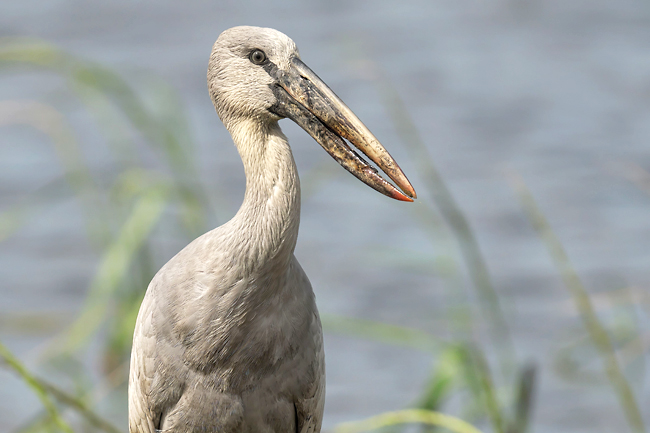ANN/THE STRAITS TIMES – Singapore’s birding community has been abuzz following mass sightings of the Asian Openbill stork, a species typically found in the rice fields of neighbouring countries like Thailand.
The distinctive greyish-white birds with black tail feathers were first spotted at Kranji Marsh and Tampines North, followed by sightings at Sungei Buloh Wetland Reserve.
Excitement over the unexpected visitors quickly spread across social media, with bird enthusiasts sharing photographs, videos, and real-time updates on platforms like Facebook.
Among those eager to catch a glimpse was 62-year-old Annette Kho, who learned about the stork sightings online and made her way to a field in Tampines Avenue 10.
Upon arrival, she witnessed a flock of around a hundred storks flying overhead towards Pasir Ris, while another 30 storks were feeding in the field
Kho, who is semi-retired, told The Straits Times (ST), “My jaw dropped when I saw so many of them. It was an unforgettable experience for a birdwatcher. As a birder for the past four to five years, I had been able to meet this species only on two occasions.”
Another birdwatcher, Khong Yew, said he visited Tampines Industrial Avenue 2 with other bird enthusiasts to snap photos of the storks.

He described the birds as majestic and added that the group was excited to see them.
Bird enthusiast Lawrence Chew also spotted the storks at a heavy vehicle carpark near Tampines North Drive 1.
The Asian Openbill stork, which stands about 80 centimetres tall, usually forages in the rice fields of continental South-east Asia – especially in the Mekong and Chao Phraya River basins – for prey such as water snails. Bird Society of Singapore vice-president Movin Nyanasengeran told ST that the storks’ appearance in Singapore in the past week is part of irruptive behaviour. An irruption is a dramatic, irregular migration of large numbers of birds to areas where they are not typically found.
He said some bird species exhibit such behaviour when their populations grow too large, food becomes suddenly scarce in their usual habitats, or even when there is an abundance of food in areas they do not usually frequent.
Researcher at the National University of Singapore Movin said it is unusual for these storks to travel this far south, as they are far more likely to fly to the northern parts of the Malaysian peninsula.
The first record of Asian Openbill storks in Singapore was in 2012, according to a paper published in scientific journal Nature In Singapore in 2013.
Six were spotted at a flooded field next to Seletar Airport. The authors noted that drought conditions in Thailand could have caused the birds to fly to Singapore.
In 2019, thousands of Asian Openbill storks were spotted at St John’s Island, located south of the mainland, and in the Changi area of eastern Singapore around noon. Many of were also seen in East Coast and flying overhead in Orchard.
Back then, ornithologist at conservation group BirdLife International Dr Yong Ding Li said the sightings were possible as the drought and the dry weather experienced in countries like Thailand could have reduced the number of snails in that region. This could have led the storks to fly towards Singapore in search of sustenance.



